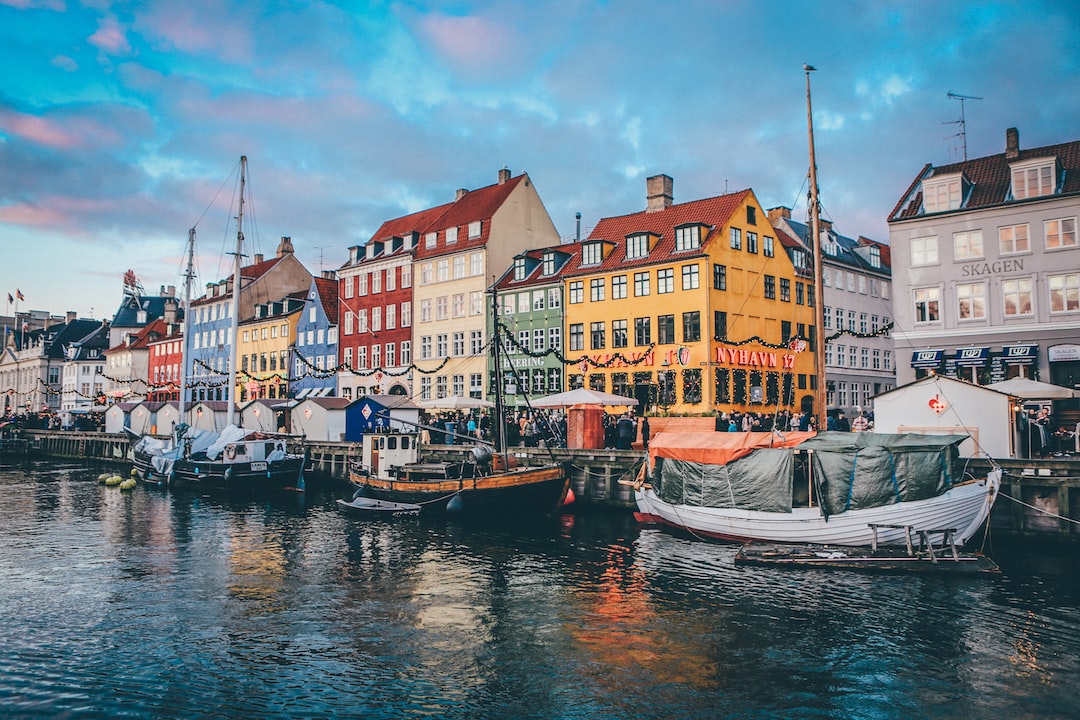Weddings are a time of celebration, joy, and love – but did you know there’s much more to them than just the ceremony?
From engagement traditions to post-wedding celebrations, Danish wedding customs have been passed down through generations.
If you’re looking for unique ways to honor your heritage or spice up your special day with something new, look no further.
Discover all the wonderful Danish wedding traditions that will make your nuptials truly unforgettable.
Danish Wedding Traditions
Engagement Traditions
Engagement traditions are an important part of any relationship. In Denmark, the proposal is a private affair between two people in love.
The couple will exchange rings as a symbol of their commitment to each other and may celebrate with family and friends afterward.
1. Proposal
A Danish proposal usually involves asking for permission from both sets of parents before proposing to your partner.
This tradition is known as “børnefri” or “free children”, which signifies that you are now free to marry without parental consent.
After getting permission, the man traditionally kneels down on one knee and presents his partner with an engagement ring while asking them to marry him.
A popular tradition for the Danish is the night before the big day.
These events are usually held in disparate groups – the groom and his friends will spend time together while the bride and her friends enjoy their own night out.
Popular activities include dinners, trips to bars or clubs, karaoke, games, or themed parties. They are considered a last night of freedom for couples before they tie the knot.
The Danish term for Stag and Hen nights is “Polterabend”, which literally translates to “loud evening”. Or sometimes, they refer to the bachelorette party as “brudepigefest”, which translates to “bridal girls’ party”.
The tradition typically involves friends and family gathering and participating in a range of activities such as pottery smashing, eating and drinking, playing music, dancing, and generally having fun.
At the end of the night, they often receive a gift from their family and friends as a sign of good luck for the upcoming marriage.
2. Ring Exchange
Engagement rings are exchanged during the proposal ceremony as a symbol of love and devotion between two people who plan on spending their lives together.
These rings often feature diamonds or other precious stones set into gold or silver bands, but they can also be made out of more affordable materials if desired by the couple.
Once the engagement has been announced, couples typically have some celebration with family and friends afterward to share their joyous news with those closest to them.
Celebrations can range from intimate gatherings at home, where only close relatives are invited, all the way up to large parties held at restaurants or hotels where everyone is welcome.
Regardless of how it’s done, celebrating this special moment marks an important milestone in any relationship and should not be overlooked.
In Danish engagement traditions, the proposal is a very important part of the process and is often celebrated with close family and friends.
But now, let’s move on to wedding ceremony traditions to explore how couples incorporate rituals, customs, attire, decorations, and more into their special day.
Wedding Ceremony Traditions
3. Venue
Danish wedding ceremonies are typically held in churches or other religious venues and feature traditional decorations such as white flowers and candles.
Venues for the ceremony can range from grand cathedrals to small chapels, depending on the couple’s preference.
Decorations may include floral arrangements, garlands of greenery, ribbons, and even a red carpet aisle runner.
4. Attire
Attire for Danish weddings is usually formal, with brides wearing white gowns with veils while grooms wear suits or tuxedos.
Accessories like jewelry and headpieces are also standard among both bride and groom.
The bride may carry a bouquet of fresh flowers while the groom wears a boutonniere on his lapel.
From the solemn vows exchanged during the ceremony to the thoughtful decorations and accessories, Danish wedding traditions are full of beauty and meaning.
Reception Traditions
5. Food and Drinks
At a traditional Danish wedding, guests can expect to be served a variety of delicious dishes.
A popular appetizer is herring or open-faced sandwiches with rye bread and various toppings.
For the main course, guests may be served roast pork and potatoes, fried fish, or boiled cod with parsley sauce.
As for desserts, popular choices include apple crumble, rhubarb compote, and marzipan cake.
Additionally, many couples also serve an assortment of pastries known as “Kransekage” (wedding cake) during the reception.
Guests will also find plenty of beer on hand to quench their thirst!
Toasts are often made in honor of the newlyweds’ union.
6. Music and Dancing
A first dance is often seen at Danish weddings.
Couples typically make their entrance to the reception with a slow, romantic first dance—an old tradition that symbolizes the start of their new lives together as husband and wife.
The traditional song for this occasion is usually “Kære Lille Mor”, or “Dear Little Mother”, which captures the spirit of the day perfectly with its heartfelt lyrics about love and marriage.
A live band or DJ usually provides music to keep the party going all night long.
Guests can dance to their favorite songs or take part in some traditional dances like the brudevals (bridal waltz).
7. Gifting
Gifts are often given to guests as tokens of appreciation for attending the event.
Popular gifts include small bottles of wine or champagne, chocolates, candles, picture frames with photos from the wedding day printed on them, keychains with special messages inscribed on them, or even personalized mugs with pictures of the happy couple printed on them.
Post-Wedding Traditions
8. The Honeymoon
After the wedding ceremony has concluded, many couples embark on a honeymoon trip together to celebrate their new marriage.
This is often seen as an opportunity for newlyweds to spend quality time with each other and create lasting memories of their special day.
Couples may choose to go abroad or stay closer to home, depending on their budget and preferences.
Popular destinations include tropical islands, beach resorts, mountain getaways, and city escapes.
9. Other Traditions
Another post-wedding tradition is sending thank-you notes or gifts to those who attended the wedding. This is a way of expressing gratitude for the support received during this special time in one’s life.
Thank you cards can be personalized with photos from the big day or contain heartfelt messages of appreciation for guests’ presence at the event.
Alternatively, couples may opt for small tokens such as chocolates or candles as thank-you gifts that are sure to be appreciated by friends and family alike.
Finally, some families pass down heirlooms such as jewelry or china sets from generation to generation as a reminder of the importance of marriage within Danish culture.
These items are usually given by parents or grandparents when they attend weddings and represent not only love but also history between generations that will continue long after everyone has gone home from celebrating the union of two people in matrimony.
10. Danish Wedding Superstitions
In Danish wedding culture, many superstitions and traditions are believed to bring the couple good luck.
One of the most popular is to break a plate before entering the reception hall. It signifies that their marriage should remain unbreakable.
Another well-known superstition is for the bride to carry a bouquet made of wheat, which symbolizes fertility and prosperity.
Additionally, it is considered lucky for the bride to wear something old, something new, something borrowed, and something blue on her special day.
Lastly, it is said that for the couple’s marriage to be successful, they must be presented with seven different kinds of bread at their wedding reception.
Conclusion
As you can see, Danish wedding traditions are unique and special. From the engagement to the post-wedding festivities, there is a lot of cultural significance placed on each step of the process.
Whether you’re planning your wedding or attending one as a guest, it’s essential to understand these danish wedding traditions so that you can appreciate their beauty and history.
So take some time to learn more about them – they will make your experience even more meaningful.




